Review: Coinsides spinner, dice alternative!
Jump to:
- What is Coinsides?
- Dice that Coinsides covers
- Other cool stuff that Coinsides can be used for
- How Coinsides relates to games with kids
- Where to find Coinsides
What is Coinsides?
Coinsides is a spinner that’s kind of like a very flat spinning top with markings to represent dice rolls along the sides.
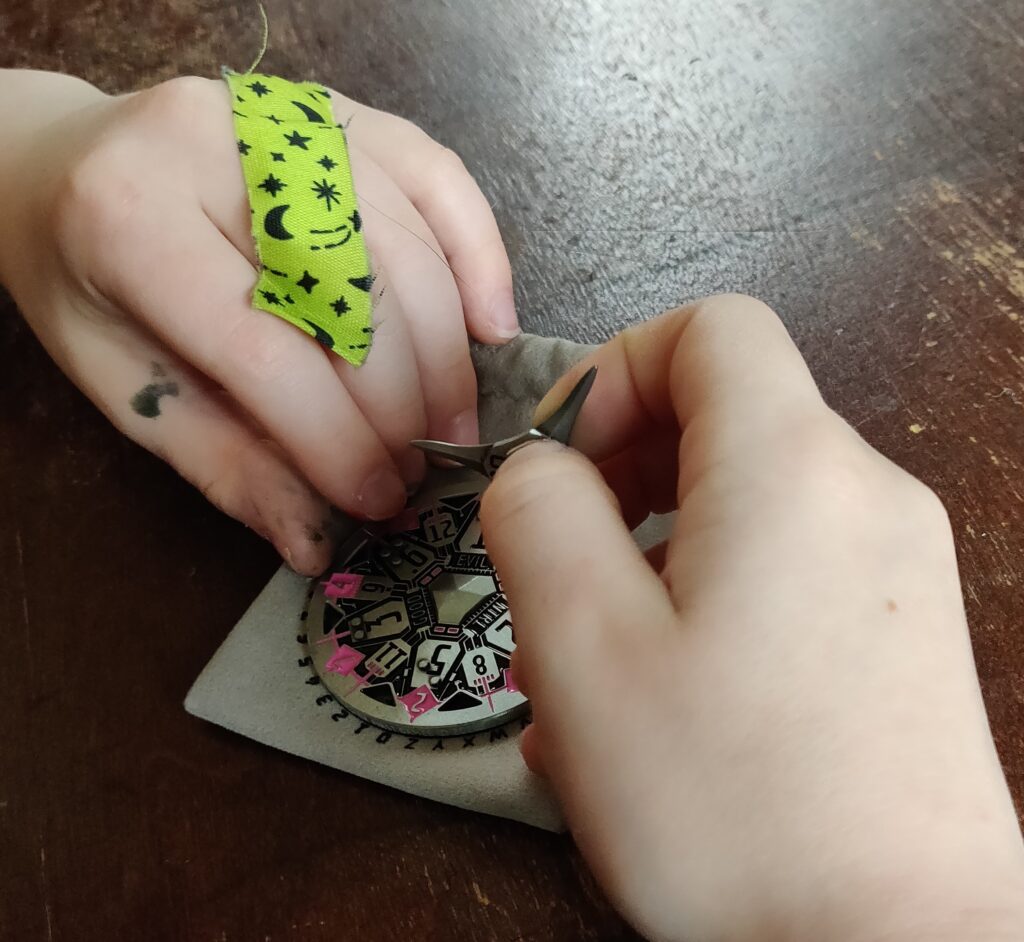
To use it, you spin the spinner and then stop it with your finger! The number to the left or right of your finger (depending on which hand you used) for the particular die you were spinning for is your “roll”!
It also has other markings and uses that are discussed later, but, at it’s core, it’s a way to consolidate a ton of different dice into one object that’s still really fun and satisfying to use (kiddo has been having a lot of fun spinning and stopping it).
Dice that Coinsides covers
The Coinsides spinner covers LOTS of different dice, including ones that aren’t typically seen in d20 systems (so you can introduce some different mechanics, if you want).
I have the Cyber Coinsides, which has markings to cover the following dice with your standard d20 system dice in bold:
- d2
- d3
- d4
- d5
- d6
- d8
- d10
- d12
- d20
- d100
It covers so many by grouping together dice that have common multiples and using both sides of the spinner to show different results.
For example, the pink side here can cover the d3, d6, and d12 by looking at the black numbers (multiple of 3 group) and the d2, d4, and d8 by looking at the pink numbers (multiple of 2 group). Then, on the blue side, it covers the d5, d10, d20, and d100 (multiples of 5 group with outer ring broken down to 1’s).
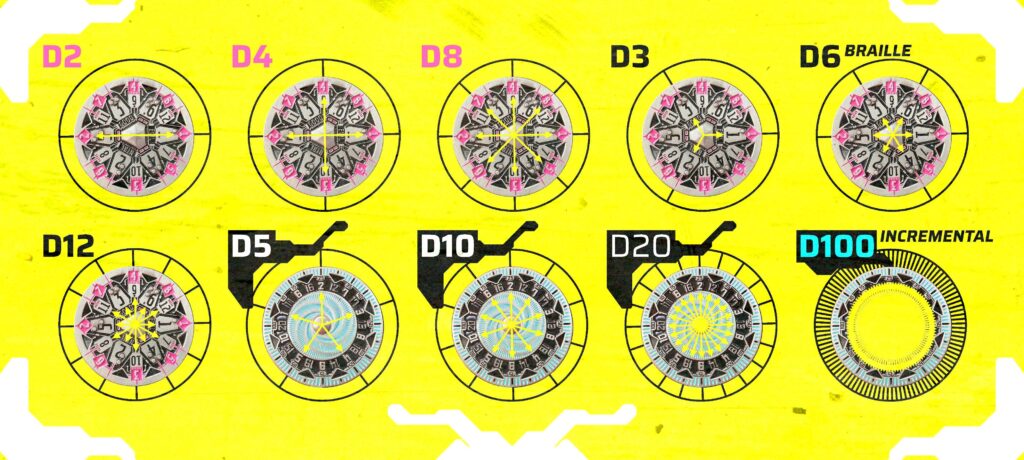
It took a minute or so to explain to kiddo, we did a few practice spins, and then it was really intuitive to actively use it in our games.
For this spin here, since I used my right hand, I look to the number on the left for where I stopped. If I was rolling for a d6, my result would be a 4 (look at the large black numbers), a d8 would be a 5 (look at the pink numbers), and a d12 would be a 7 (look at both the small + large black numbers).
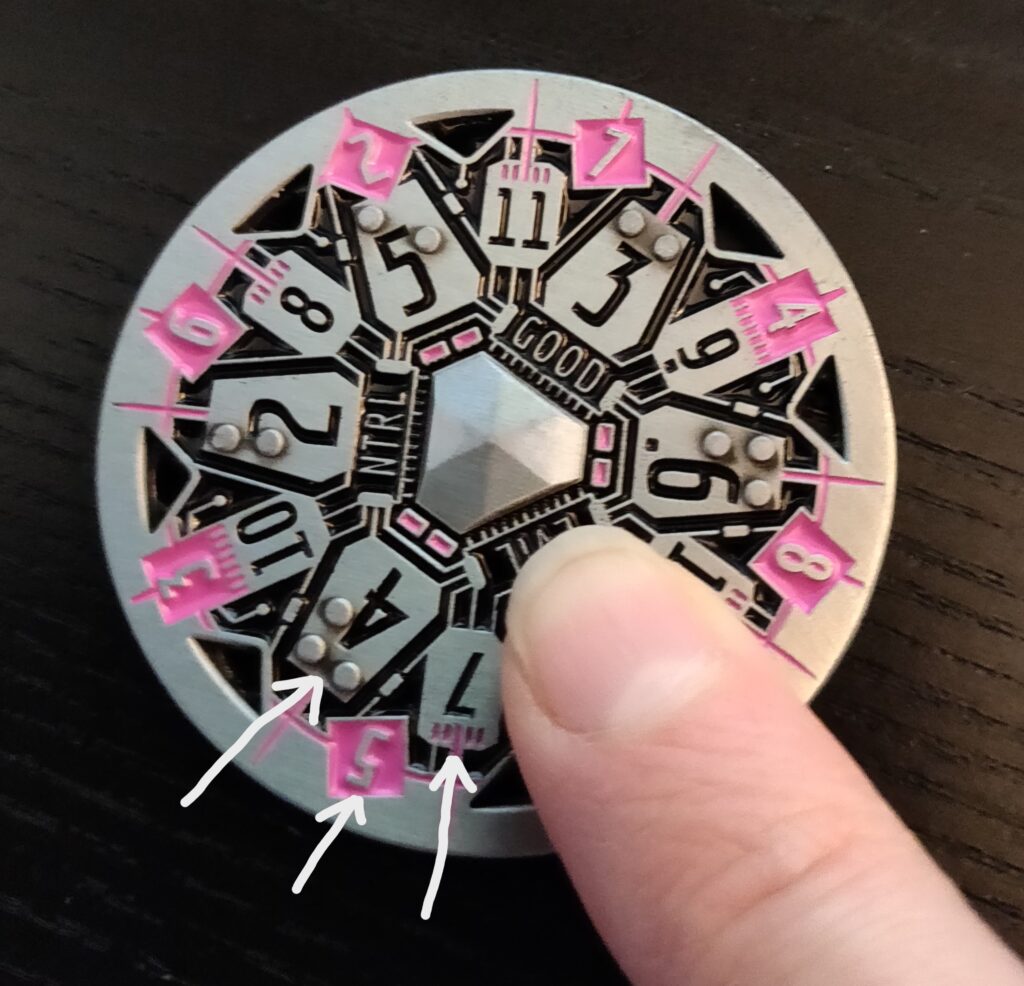
Other cool stuff that Coinsides can be used for
The spinner comes with this little protective bag that you can use to keep it safe, but the bag also has an encoding/decoder wheel on it that lines up with the spinner! You can line the spinner up and create number codes for your players to solve for figuring out puzzles (like for a keypad if you’re doing a cyberpunk adventure?) that are part of your game.
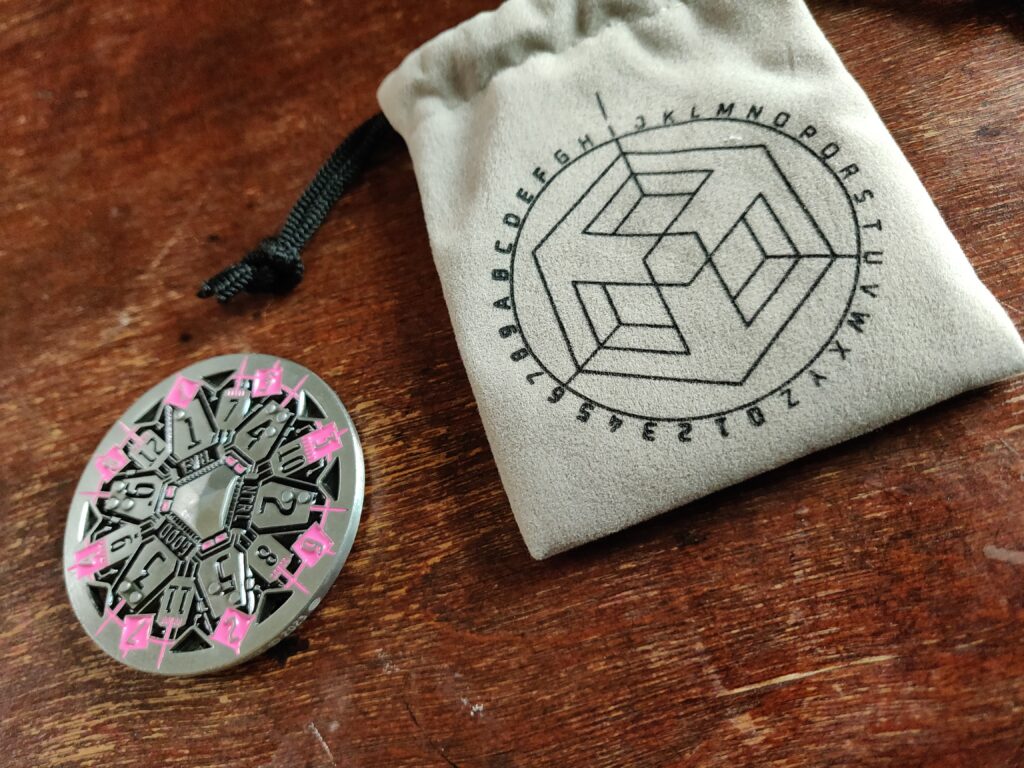
It also lets you track health using the three-spoked tracker aligned around the edge of the spinner, and it suggests using it as a real-life timer (spin the Coinsides and when it stops, time is up).
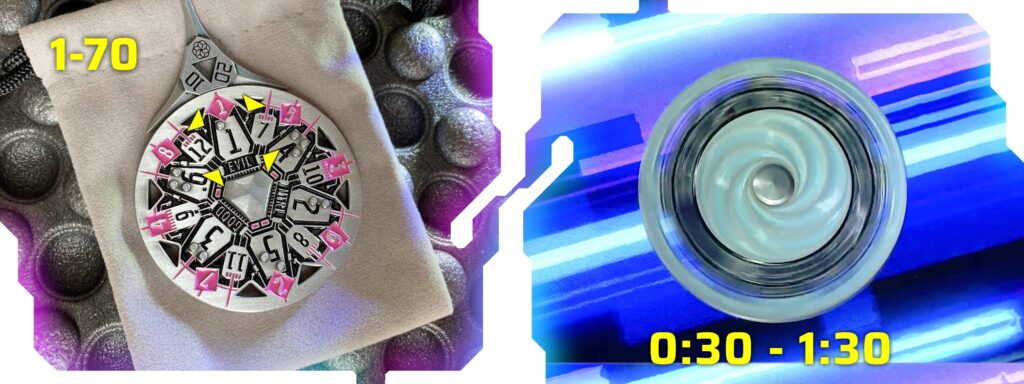
The Cyber Coinsides also has braille included on the d6 markings, so it can also be a braille compatible alterative to dice that may have smooth surfaces or that could have rolls impacted by having protruding bumps.
How Coinsides relates to games with kids
The spinner is fun!
So, first, it’s just fun! Rolling dice is fun (satisfying click-clack sounds!) but using the spinner and stopping it with your finger is a lot of fun too. Especially if you’re playing a lot of TTRPGs, this can be a cool element to add to change things up a bit.
Alternative for choking-hazard concerns
For games with young kids, this also gives you an alternative if you’re worried about dice being a choking hazard. Coinsides are about 3x wider/taller than a die and, while I wouldn’t recommend letting a kid teethe on it (because some kid would probably try to swallow it if), it doesn’t exactly look like something that a kid would easily swallow. The spoked tracker should be kept away from kids since it pointy and a bit smaller, but the tracker is also not part of the rolling process, so removing that from the table won’t affect the base functionality of the spinner.
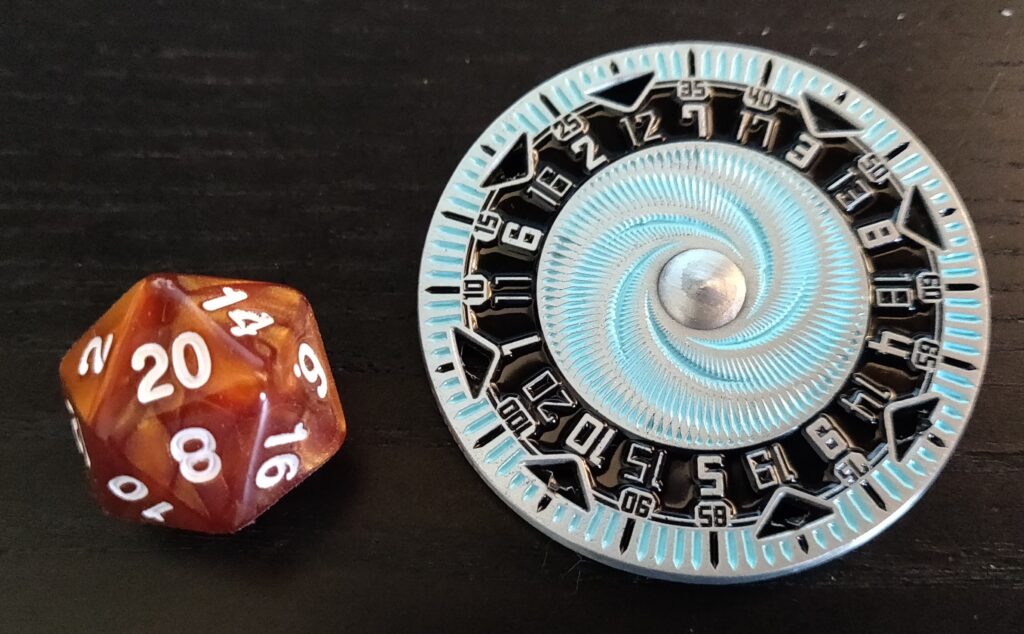
One part to keep track of (versus a dice set)
When it comes to keeping track of things, this also is only one thing to keep track of versus a full set of dice. With dice, my kid tends to throw them a bit versus rolling them, so we loose them sometimes, and I’m a bit worried about letting him use my matching sets. With this, however, it’s got some weight to it, so it doesn’t bounce around when spinning, so we haven’t even gotten close to loosing it under the table, and it’s only one thing to keep track of. I don’t need to worry about my kid (or me, for that matter) loosing one die from a set somewhere if we’re playing a game at someone else’s house.
Practicing multiples of 2, 3, and 5
Lastly, while explaining how it worked to kiddo, I also explained a little bit about how multiples work and why certain dice were grouped together… and he got it!! It’s been good practice talking about multiples for small numbers and understanding how to read the 5’s side, and it’s not a math lecture either. He just learned it because he wanted to in order to use the cool new spinner!
Where to find Coinsides
This was a lot of fun to mess with, and I’m really glad that I was lucky enough to win one for games with kiddo! If you want to get one of these, you can find them on the EX1ST website here, and I would also recommend to keep an eye out for future game jams for Coinsides adventures on the creator’s itchio!
If you liked this post, make sure to subscribe to the TTRPGkids monthly newsletter to stay up to date on the latest reviews, tips and tricks, game and podcast list updates, and more! Thank you for playing tabletop RPGs with your kids and sharing this awesome hobby with the next generation!



1 thought on “Review: Coinsides spinner, dice alternative!”